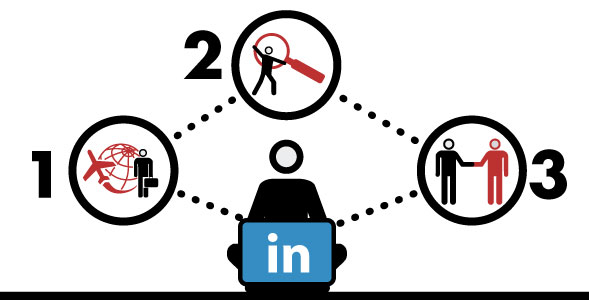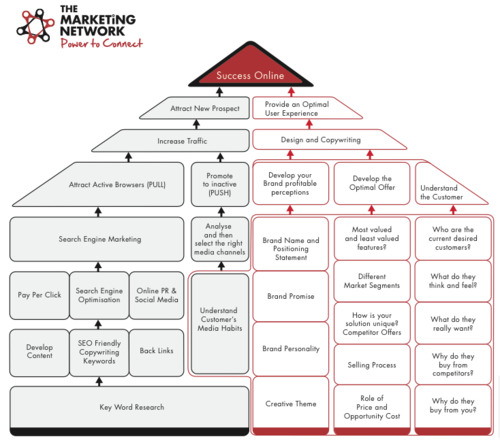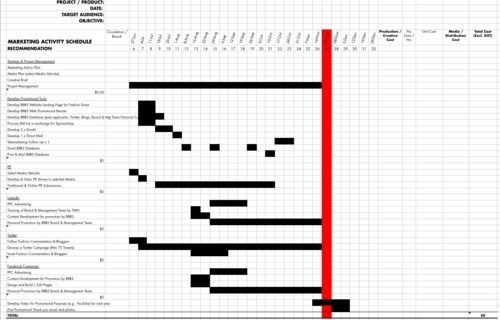I uploaded a @YouTube video ht…
I uploaded a @YouTube video http://t.co/57RoyOLb ORC International
I uploaded a @YouTube video http://t.co/57RoyOLb ORC International
‘What is a brand’ is still the most misunderstood and misused concept in the small business arena.
In previous blogs I have at length discussed the fact that it is not a logo, name or packaging, but the total sum of perceptions that your customers and prospects have about your business or organization.
It is what they think and feel about you and those emotions and thoughts are the result of your target audience experiences with your company.
But there is an even simpler way to look at the concept of brand, the way that the world of business looked at it before the word became a way for ad agencies to not only examine competitive strategies in their bid to sell to the mass market in the 1950s but also a way to mystify the advertising process and hence become the guardians of the ‘brand’.
Here’s the way three great mean described:
“It takes many good deeds to build a good reputation and only one bad one to lose it”
-Benjamin Franklin
“It takes 20 years to build a reputation and 5 min to ruin it. If you think about that you do things differently.”
-Warren Buffett
“A brand for a company is like a reputation for a person. You earn reputation by trying to do hard things well.
-Jeff Bezos, founder of Amazon.com
Simple – it’s your reputation. So brand building is actually all about building and protecting your reputation. Although I hate the somewhat old fashioned and hence manipulative sounding title of the book that at one stage outsold the Bible, the message in it is sincere and well meaning and one that has not been adopted anywhere near enough. I’m talking about a book that gives us all the most basic and amazing principles of persuasion, reputation building and managing people -“How to Win Friends and Influence People”
The next 4 blogs will summarize the 4 chapters of Dale Carnegie’s must read book to effective communication and illustrate the way they directly relate to the AIDA (Attention | Interest | Desire | Action) model of advertising.
The objective of this post is to highlight the importance of personal branding or good old reputation improvement in layman’s terms.
I hope to show that the opportunity to build your reputation or personal brand is not only being missed by the majority of recruiters, but the way in which business is being conducted is detrimental to brand building.
Rightly or wrongly, Real Estate Agents and Lawyers are some of the least likeable white-collar professionals with a real image problem, but having picked on lawyers previously:
and trying to alleviate marketing mistakes and problems in the small business arena on a daily basis; from manufacturers to management consultants, it’s high time we pick on someone new.
It’s not only fun, but also a great way of exercising one’s grey matter, stepping outside the daily routine and looking at a particular industry segment through the eyes of a Richard Branson or Steve Jobs. What would they do? One thing we can be certain of is that they would take away the features client have little interest in and improve on the benefits that are valued; they would turn the market on its head! Sir Branson, if you are reading this, please feel free to invite me to lunch on one of your private islands to discuss the opportunity further.
Most do not have a unique offering in the marketplace that is delivered in a memorable and campaignable way both in terms of marketing communication and user experience. Other than specialising in a particular industry segment there is little else that differentiates them or provides a unique experience to their clients or candidates.
Before going further, allow me to note that this is not an attempt to provoke or put down the recruitment industry.
Firstly, when referring to the “majority” we mean transactional recruitment. These firms could learn much from Executive Search firms who are very good at targeting and engaging in a conversation with relevant prospective applicants. They are more strategic and have the vision to see that today’s candidates may be tomorrow’s clients; they see the relationship as a journey, not a short trip.
Secondly, most firms do want to treat candidates well and have good intentions. However they often fail for the following reasons:
a. Their business model is 100% client driven and hence they act only in the clients’ best interests. This means that there’s no time allowed to maintain candidate relationships.
b. They don’t realize the importance of maintaining their candidate data or doing so is difficult an unproductive. If this information was kept up to date, it would be much easier to contact candidates with the relevant roles and show that they understand the person they are calling. Lack of good candidate management software (CRM) means that companies can’t be as process driven, as they would like to be.
Thirdly, there are many talented, professional, hard-working and passionate members of the recruitment industry who are great at their jobs, but unfortunately they are not the majority. Those that do this properly really differentiate themselves in a positive way. Smaart Recruitment, The Neil Williams Company, Briggs Communications, Chikara Capital all share passion, experience, knowledge and excellent client service that makes both the applicants’ and clients’ experience truly remarkable.
Finally, recruitment agencies are probably one of the few professional services firms that have the ability to very quickly build a great services brand. Why you ask?
Let’s start by listing the different target audiences of a recruitment firm:
Let’s take an average job and count the number of personal and recruitment firm brand touch-points:
Our research shows that on average each recruitment consultant may communicate with anywhere between 40 and 300 different people for any one position.
So all these contacts made by recruiters in what I have called a ‘high contact sport’ is a great opportunity to generate positive brand perceptions for:
The prospecting effort by most recruiters or headhunters ends up being perceived as similar to that of a pushy second-hand car salesman.
A recent Seek survey showed that 40% of applicants were disappointed by the lack of feedback* however if you speak to most people looking for work you will find that the percentage is actually much higher.
Over the last 24 months I have spoken to dozens of jobseekers in the I.T., Marketing and Administration industries who in the majority have had a negative experience with the recruitment consultant who contacted them.
In all these cases the way in which the recruiter communicates with these audiences, via phone, email and LinkedIn has been detrimental to their brand instead of contributing to brand building.
As pressure to win retained jobs increases, recruiters are feeling the strain. A few years ago it was acceptable to place a candidate over a few months, now results are being demanded in two weeks. Often these timeframes are promised to ensure retained work, but it then becomes almost impossible to adhere to them and build a good candidate list without something being compromised. Often the first area to suffer is ‘candidate management’, followed by poorer quality candidates being sourced.
Young or inexperienced recruiters with high or almost impossible KPIs are under pressure from day one and the turnover in some of the larger transactional firms is very high. Under this sort of pressure and lack of maturity or understanding of business etiquette, recruitment consultants send off mass and untargeted emails to candidates, call inappropriate people and fail to screen and qualify candidates in a uniform and process driven manner.
We recently advertised for a senior role in our consultancy on LinkedIn. The role was a business opportunity to build your own business under our banner and was not in any way a typical job, the opportunity description was very specific, e.g.: it had no salary, no set hours of work.
We received 2 calls from recruitment consultants who cleverly managed to conceal their identity until they spoke to me. When told that we were not interested in their services and that I was very happy using LinkedIn, there was no polite offer of sending me some information that would convince me to change my mind, such as ‘Pitfalls of DIY Recruitment’, or any other attempt to show their expertise through thought leadership and experience, there was no attempt to highlight the benefits of using their recruitment services. There was however ‘begging’ to keep in touch with me to see whether our needs would change. When contacted in approximately 6 weeks, one of the consultants couldn’t even remember why they were calling me and their CRM system was under the impression we were looking for an employee!
This is an email I received from a senior recruiter wanting to connect with me on LinkedIn and ask for a referral:
“We currently have a role for a <Job Title> Expert with a leading <industry> brand. Looking for someone with at least two years <area of expertise> experience. If you know of anybody please send me your number for a chat.
Thank you,
<Name>
<Recruitment Consultant’s Name> has indicated you are a person they’ve done business with at <Recruitment Firm Name>·
Hi <Name of Prospective Candidate / Referrer>, I came across your profile and wanted to drop a quick line to see if you are exploring other job opportunities. I have a <Name of Position> opportunity – 12 months fixed term contract in <Name of Geographical Region>. If interested please call me on <Phone Number> to discuss further.
<Name> has indicated you are a person they’ve done business with at <Recruitment Firm Name>
Hi <Name of Prospective Candidate / Referrer>, I’m recruiting a role which I think may be if interest to you – are you open to career opportunities at present? If so please contact me on <Phone Number> for a confidential chat, thanks, <Name of Recruitment Consultant>.
My reply to Case 2 went something like this:
Hi <Name>, thank you for the invitation to connect.
It took me a while to respond due to the fact that I didn’t know who you were and you didn’t provide a reason for wanting to connect. You indicated that we have worked together at <Name of Recruitment Firm> which is not true, and indicates to me that you can not be bothered finding my email address or paying for an InMail or learning the many other ways of connecting on LinkedIn.
In saying this, I’m always happy to assist fellow professionals if they just ask – nicely! And this raises the question of networking NOT just social media utilization.
You probably wouldn’t call me or meet me at a networking function, and ask for what you are asking below. LinkedIn is NOT Twitter, it is a much more personal medium. Most people, myself included hate receiving “broadcasts”.
I realize how busy and stressful business is today, especially in recruitment and especially at your level of top management, but your below request for a favor is missing 2 critical elements for getting the favor:
If you do this 20 times a day and even if a fraction of the people think like me, you are not creating the optimal perceptions about you or the company you work for. This is something a lot of recruiters don’t think about, but those that do can really stand out from the crowd.
Although I later found that the LinkedIn message was written by a junior with access to the senior’s LinkedIn profile, and the person has since been dismissed, the above highlights the problem which is happening on a mass scale and the crime is being perpetuated by the very people who should most be aware of social media etiquette in general and LinkedIn specifically as they spend so much time in this environment.
What will the future bring? Will it see talent agencies arise to represent the interests of the employee rather than those of the employer? It already happens in Professional Sports, Modeling and Acting. Can this happen in I.T., Marketing, Engineering, etc.?
Will your typical recruitment agency survive or will it morph into a new animal? Will the agency model be increasingly catering to executive search and selection and any thing below executive level be done by employers dealing directly with the talent pool through even more advanced online technologies? Only time will tell, but one thing is certain, the industry deserves a shake up Mr. Branson!
* Your Career, Marketing Magazine June 2012


There are not many certainties in the world today, but here are 3 we can examine and show you how LinkedIn can assist you in benefitting from each:
Whether there will be another financial crisis or not and how big it will be is not something any of us can predict or control, but jobs will keep being lost; outsourcing, offshoring, resources will keep flowing to where the return on investment is the greatest. Whether it is job vacancies or business opportunities you will have to work harder and smarter to stand out and differentiate yourself from a greater number of competitors all trying to get a smaller share of the pie.
So, who can you rely on when times get tough?
You! And the equity in you; your personal brand. LinkedIn is the perfect personal branding and publicity tool.
LinkedIn, is a way that you can communicate to the world
When it comes to B2B and professional services, LinkedIn provides the ultimate platform to combine all of your marketing assets, once they have been optimised – no point driving visitors to a leaky boat:
LinkedIn is the perfect Sales Tool for B2B and professional services marketers that allows you to leverage your networks. LinkedIn provides the perfect and simple platform for every step of a typical Referral Process:
Don’t get left out, get LinkedIn.
To learn about our LinkedIn courses check this out.

All websites can be classified into 4 types:
1. A site that sells product(s) or service(s) by the quality of design and copywriting, which is in turn
2. A lead generation site that attracts potential new clients
3. A customer support or self service site that reduces costs by completing routine tasks, replacing or reducing human interaction
4. A content site that educates or informs visitors about your organization or service
Most websites are a mixture of the above, yet content strategy is the key! They all need to do 2 things to be successful:

Website marketing is an ongoing process, similar to designing and building a house. It is then important to maintain and build the value of your marketing properties and prevent this value being depreciated through neglect of infrastructure or promotional activity by competitors.
To get the best return on the marketing investment, time needs to be dedicated to answer the questions that assist in building a solid foundation for the marketing of your business online.
By starting at the bottom and working up, the process will be shorter, less painful and more profitable.

To reach your customers and prospects with your message most cost effectively and improve your Cost Per Lead, you will need the best marketing tool; a plan. Your Marketing Action Plan should include the following:
The Marketing Activity Schedule usually consists of an excel spreadsheet that outlines each activity, when it occurs and how much it costs to implement. Here is a hypothetical example of what one may look like with costs being omitted.
On the Marketing Activity Schedule you can also mark any important events on your marketing calendar, like trade shows, or product launches, etc.
The one page overview will provide all staff in the company with a great overview of all marketing activities, costs and timings. Together with the Marketing Action Plan, everyone will be on the same page in terms of objectives and responsibilities.

Recent Comments